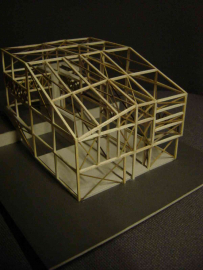The Canopy House in the Flemish Pajottenland
A house in a valley In the course of history the word canopy has evolved from the Egyptian urn with a removable (human) head, to a mosque with a dome, to a bed under a large mosquito net and finally to an armchair covered or draped with linen. The client, a native of Antwerp added on top a local meaning : a sandwich (canapé).
What we try to achieve is to give a monumental house the swung of a piece of furniture. The building blocks we started with, are 2 identical (be it mirror wise) folded EL-shapes. These consoles, which we can click together, in a shifted manner, give it some margin for play. This margin allows to introduce the circulation (ramps run from bottom to top) and to hide half a level high storage spaces in-between the living spaces. The upper console (containing bedrooms, study, kitchen and dining room) is grafted onto the street. The lower console (containing garden flat, living space and library) is oriented somewhat to the garden and the landscape behind. Around these core elements sits a homogeneous skin : roof, front and back façade caught in one loop; the static building volume lifted out of its joints. With its big volume and ceramic red polyester bandage, the contemporary house is coinciding with the vernacular farm buildings spread throughout the landcape.
A story about the words "guise", "Geus", "gaas" (Dutch for veil). Arriving into this rural country, west from Brussels, the landscape changes dramatically. From suburbs it goes to the soft rolling hills that are best known from Brueghel the Elder's paintings. Particularly where our site is, open to the castle of Gaasbeek that has been dominating it for many centuries, the landscape is very well preserved. This castle is a landmark in Belgian history, as it is known as the residence of the Count of Egmont. Both Egmont and Hoorne, freethinkers, dissidents, Geuzen were decapitated on the Grand Place of Brussels by the duke of Alva, leader of the Spanish Inquisition under the rule of Philip II. The Canopy House is built in the adjacent valleys. The client wanted us to capture the special light from the place .We dealt with it through the ramp that runs to the top, ending with a shower of glass; a crow's nest. From here the view through a vertical slit window that sits in the sloping roof, is oriented towards the castle. The clients, lawyers, are able to wash themselves as a true act of rejuvenation, as a catharsis, in memory of this one line of light.
Building materials: a 600m2, 20 meters long house allowing for a 10% ramp. The ramp organizes the spaces into split-levels. . A visible steel structure facilitates the ability to cantilever, and shift the plans : deforming the box and roof typology. A staircase poured in concrete provides extra stiffness (ochre metallic) Half level high storage spaces hide wind trusses. Exterior : cladding in a polyester bandage (altered with continuous panes of glass). Wooden shingles as roof material.
Sustainability : A loop of roof shingles on north-south axis versus cold or heat. The house is a bubble ; energy losses reduced, greenhouse effect enforced. Roof water and drainage runs into an existing pond on the site and contributes to flora and fauna.

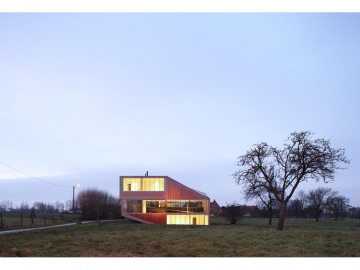
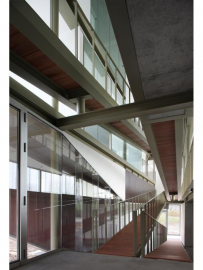
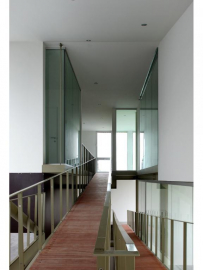
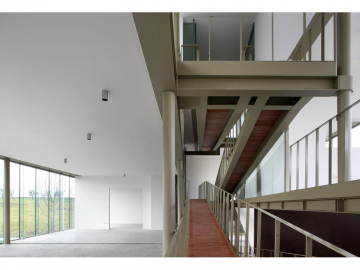
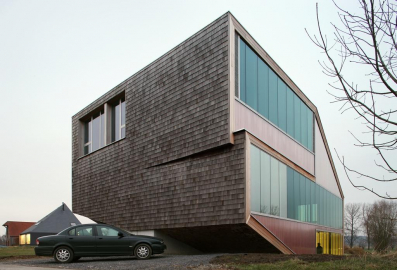

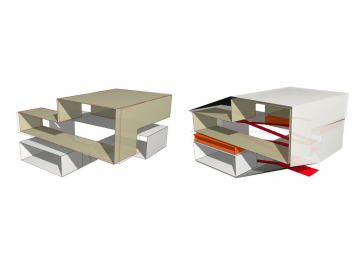

 copy.jpg)
.jpg)
 copy.jpg)

